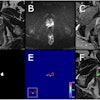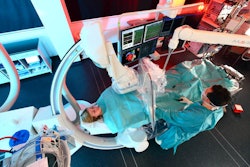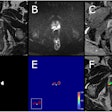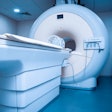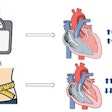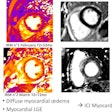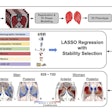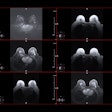Should all trainees be forced to do research? This question has sparked a lively discussion between three leading European researchers, all of whom are gastrointestinal (GI) radiologists.
“Insisting that every trainee author a research study is likely to encourage more low-impact, low-quality research at a time when this should be discouraged,” noted Prof. Steve Halligan, professor of GI radiology and principal investigator, and Prof. Stuart Taylor, professor of medical imaging, both of University College London (UCL), in a letter posted by Insights into Imaging on 4 April.
Most medical research is poorly designed and executed -- something that’s been known for decades -- and radiomics is a good example from radiology, with most studies woefully underpowered and without endorsement in patient management guidelines, they added.
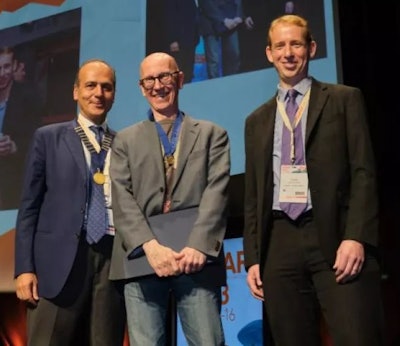 Prof. Steve Halligan (center) receives the European Society of Gastrointestinal and Abdominal Radiology (ESGAR) gold medal from Prof. Andrea Laghi (left) and Prof. Stuart Taylor in 2023. Image courtesy of ESGAR.
Prof. Steve Halligan (center) receives the European Society of Gastrointestinal and Abdominal Radiology (ESGAR) gold medal from Prof. Andrea Laghi (left) and Prof. Stuart Taylor in 2023. Image courtesy of ESGAR.
Demanding that all trainees acquire advanced research skills cannot happen without adequate infrastructure, and even then, this aspiration may not be desirable, they continued. “It is rather like demanding all radiologists need advanced mammographic or interventional skills.”
For instance, do trainees really need training on grant proposal writing? “External funding is extraordinarily difficult to obtain, even for highly experienced researchers. We never involve trainees when writing grant proposals because we are far too busy helping mid-career researchers do this.”
Many trainees seek research experience not because of any burning desire to advance the field but to achieve promotion, and they often say they will happily abandon research as soon as they secure a permanent post, they wrote. Only a small proportion ever aspire to become research leaders, and it’s far more efficient and sensible to concentrate all efforts on these people, many of whom actively seek out research training and mentorship, often at other institutions if expertise is unavailable locally.
“Training should focus on how to assess research quality because far more radiologists will read research papers than write them. It is far more important that trainees can recognize biased, poorly powered research, because patients may be harmed if incorrect findings are acted upon,” they concluded. “We would encourage a training environment where the majority are not ‘forced’ to do research, thereby allowing scarce expertise and resource to focus on the few for whom it is a genuine passion.”
The counter-argument
Responding to the letter by Halligan and Taylor, Prof. Luis Martí-Bonmatí, director of medical imaging at La Fe University and Polytechnic Hospital in Valencia, Spain, noted that developing a research culture within radiology departments must not be seen as optional but as “a survival goal for the specialty.”
“Research paves the future of radiology, and trainees should be continuously trained according to their capabilities, understanding, willingness, and engagement. Even in high-workload environments, radiologists should actively participate in research to the fullest extent of their expertise,” he argued.
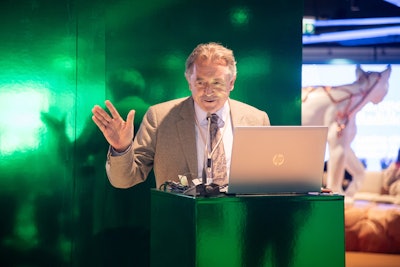 Prof. Luis Martí-Bonmatí. Image courtesy of ESR and Sebastian Kreuzberger.
Prof. Luis Martí-Bonmatí. Image courtesy of ESR and Sebastian Kreuzberger.
Radiology has a relatively low number of active researchers compared with other medical specialties, and its limited engagement in research reduces its influence on medical innovation, clinical guidelines, and funding allocation, according to Martí-Bonmatí. “Given the increasing role of imaging in AI-driven diagnostics, biomarker discovery, and personalized medicine, shouldn’t this change? By expanding research exposure, we can increase the probability of developing future leaders who will drive medical imaging advancements.”
Just as nations invest in broad education to cultivate future scientists and innovators, radiology must foster a culture where research is more accessible, ensuring that, over time, more specialists contribute to its evolution, he continued.
“Instead of restricting research to a select few, a more constructive approach would be to expose all trainees to the basics of research early in their training; encourage mentorship and multidisciplinary teamwork over solitary research efforts; foster enthusiasm for research, recognize its cumulative value; and promote skill development in critical appraisal, statistical literacy, and research methodology,” wrote Martí-Bonmatí.
High-impact studies do not emerge in a vacuum, and they require a thriving research community where ideas are tested, refined, and expanded upon by multiple contributors, he added. “If the goal is to produce “less but better research,” a critical mass of research activity must first exist. Discouraging research participation among residents due to quality concerns may inadvertently stifle future innovations.”
You can read the Halligan/Taylor letter at insightsimaging.springeropen.com/articles/10.1186/s13244-025-01940-8 and the Martí-Bonmatí letter at insightsimaging.springeropen.com/articles/10.1186/s13244-025-01954-2. Also, you can click here for the article by Dr. Michail Klontzas et al that led to this debate (“Research training during radiology residency: findings from the ESR Radiology Trainee Forum survey”).





